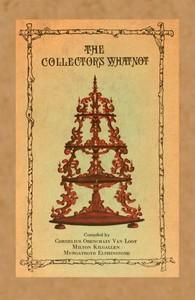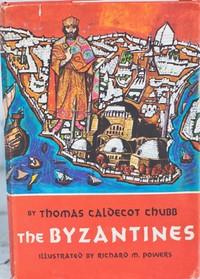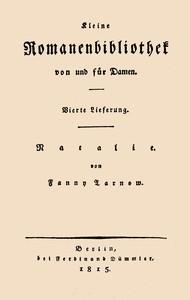Read this ebook for free! No credit card needed, absolutely nothing to pay.
Words: 19969 in 6 pages
This is an ebook sharing website. You can read the uploaded ebooks for free here. No credit cards needed, nothing to pay. If you want to own a digital copy of the ebook, or want to read offline with your favorite ebook-reader, then you can choose to buy and download the ebook.


: Chambers's Journal of Popular Literature Science and Art fifth series no. 126 vol. III May 29 1886 by Various - Periodicals
CLAIMANTS TO ROYALTY.
When he found that his story was not to be credited, he accused the magistrate of yielding to pressure put upon him by the Princes Victor and Louis, whose interest it was to supplant the rightful heir. He spoke in the language of a well-educated man; and when examined with a view to determine his mental condition, he betrayed no symptom of derangement.
The methods of all Claimants have a certain similarity, though some have been more audacious and successful than others. This is perhaps the most audacious of modern instances. But there are many examples of Claimants more or less notorious in the history of past times, whose pretensions are quite as difficult to reconcile with recorded facts. In most of these historical instances the Claimants have advanced pretensions to the name and station of a deceased member of some reigning family, and much obscurity has thus been thrown around historical events, whose incidental details have been confused and complicated by the conflicting statements of contemporary or nearly contemporary records.
Haflidi Steinsson, the priest here mentioned, had long since gone back to Iceland, where he died parish priest of Breidabolstad; and in chronicling his death, the annalist adds that 'he was King Eirik's chaplain at the time that his daughter Margaret was taken to Scotland, as she herself afterwards bore witness when she was being carried to execution at Nordness.' Indeed, so prevalent was the belief in the personal identity of the Claimant with the daughter of King Eirik who died on the voyage to Orkney in 1290, that the place of her execution became a resort of pilgrims; and many of the priesthood having countenanced the popular belief in her martyrdom, a chapel was built on the spot where she suffered; and though uncanonised, and reprobated by the dignitaries of the church, her memory was held in reverence till the Reformation as St Maritte , the Martyr of Nordness. In 1320, the number of pilgrimages to this irregular shrine had become so numerous that Bishop Audfinn of Bergen issued an official interdict against them, an interference which was resented by his canons, some of whom were bold enough to protest against its promulgation.
Nothing is known of the Claimant's previous history, except that the contemporary annalist states that she came to Bergen in a ship from L?beck. Absolom Pedersen asserts that she came from Scotland, but gives no authority for the statement, and there is sufficient evidence in the records to render this highly improbable. But it is a very remarkable circumstance that Wyntoun, the popular historian of his time, gave currency in Scotland to the statement--which we must assume to have been then the popular belief--that the Maid of Norway was put to death in her own country by martyrdom. After giving circumstantial details of the sending of the Scottish embassy to Norway, consisting of Sir David of the Wemyss and Michael Scot of Balwearie, he adds, that when they arrived--
In accordance with the usage of the period, the expression of the chronicler describing the manner of her death would be universally understood to mean burning at the stake; and the evident anachronism, as well as the inherent improbability of the narrative, is accounted for by the fact that it quite accurately describes the death of the Claimant, but assigns it to the time of the death of the Princess. The reason given by Wyntoun for the 'martyrdom' is, that the Norwegians--though their law allowed--could not brook the idea of a woman succeeding to the crown; and this also may be accounted for by the fact that the woman who suffered was a pretender to the crown.
In his official interdict of 1320, forbidding the people 'any longer to invoke that woman with great vows and worship as if she had been one of God's martyrs,' the bishop states that he has deemed it his duty to declare the truth as to her case; 'She said, indeed, that she was the child and lawful heir of King Eirik; but when she came from L?beck to Bergen she was gray-haired and white in the head, and was proved to be twenty years older than the time of King Eirik's marriage with Margaret of Scotland. He was then only thirteen winters old, and consequently, could not have been the father of a person of her years. And then he had no other child than one daughter by Queen Margaret. This only child of King Eirik and Queen Margaret was on her journey to Scotland, when she died in Orkney between the hands of Bishop Narve of Bergen, and in the presence of the best men of the land, who had attended her from Norway; and the bishop and Herr Thore Hakonson and others brought back her corpse to Bergen, where her father had the coffin opened and narrowly examined the body, and himself acknowledged that it was his daughter's corpse, and buried her beside the queen her mother, in the stone wall on the north side of the choir of the cathedral church of Bergen.'
It is well known that shortly after the king's imprisonment, there was a conspiracy to replace him on the throne. The conspirators attempted to attract the people to their cause by spreading abroad the rumour of his escape from Pontefract; and, as is stated by a contemporary chronicler, 'to make this the more credible, they brought into the field with them a chaplain called Father Maudelain, who so exactly resembled good King Richard in face and person, in form and speech, that every one who saw him declared that he was their former king.' The conspiracy failed; and those most deeply concerned in it, among whom was the first personator, Father Maudelain, were beheaded.
Shortly afterwards, it was given out that King Richard had died in Pontefract Castle, on or about the 14th of February 1399. Rumour, indeed, spoke freely of the suspicion, that if he were dead, he had surely been murdered by his enemies, and with the connivance of the reigning king. It was not till nearly a month after the alleged date of his death that, in order to silence the popular rumours, King Henry caused the body to be brought publicly to London 'with the face exposed,' and laid in state for two days in the church of St Paul, 'that the people might believe for certain that he was dead.' 'But,' says the old chronicler formerly quoted, 'I certainly do not believe that it was the king, but I think it was Maudelain, his chaplain,' who had been beheaded little more than a month previously.
There were many who shared this unbelief; and in 1402, the rumours that King Richard was yet alive became so persistent and circumstantial, that King Henry dealt with them by putting to death a number of persons, principally priests and friars, for spreading such treasonable reports. The cause of the revival of these rumours at this time is revealed in a document issued by King Henry, requiring the sheriffs to arrest all persons guilty of spreading the report that King Richard was alive, which had arisen from a person calling himself King Richard having appeared in Scotland in company with one William Serle, who had been groom of the robes to Richard, and had possessed himself of his signet.
IN ALL SHADES.
Meanwhile, Harry Noel himself was quite unconsciously riding round to the Hawthorns' cottage, to perform the whole social duty of man by Edward and Marian.
Free books android app tbrJar TBR JAR Read Free books online gutenberg
More posts by @FreeBooks

: The collector's whatnot by Kahler Hugh MacNair Roberts Kenneth Lewis Tarkington Booth - Antiques Humor


: The Byzantines by Chubb Thomas Caldecot Powers Richard M Illustrator - Byzantine Empire History Juvenile literature






